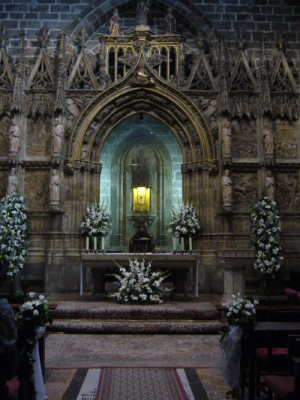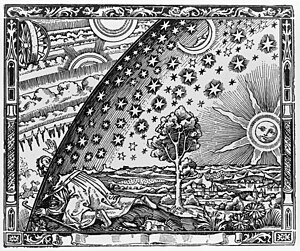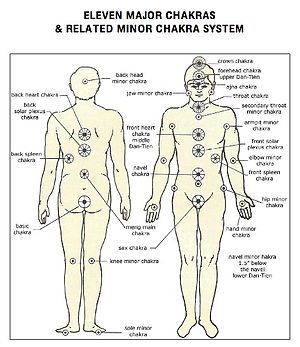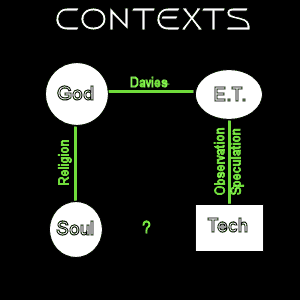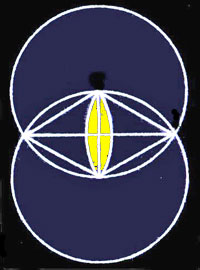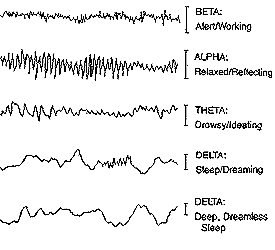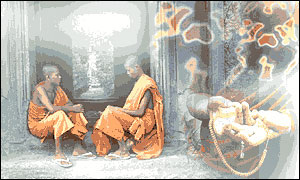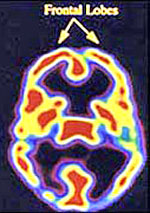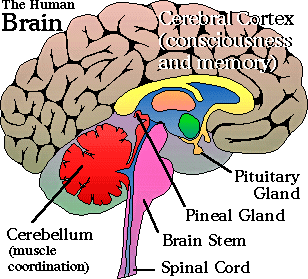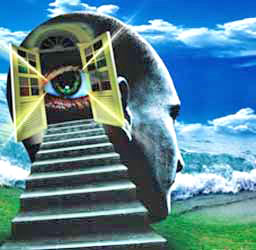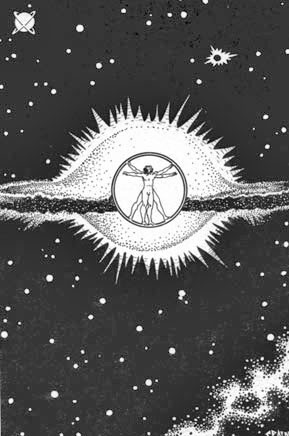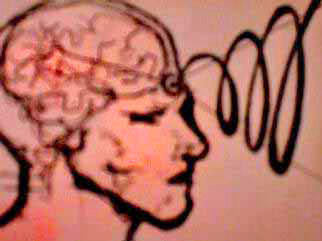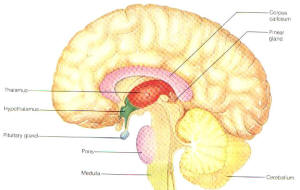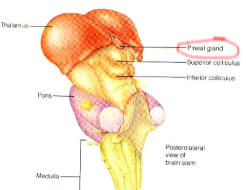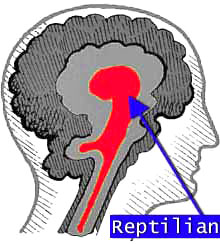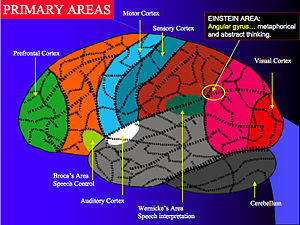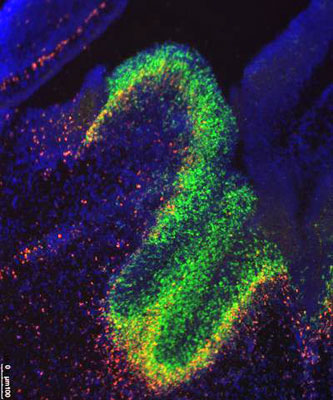

Early Christians understood the importance of Astrology. Do not allow your modern Preachers, Pastors or Religious Leaders to tell that astronomy or astrology is the devil or wicked. A simple fact is if the moon moved out of place, it would have devastating ramifications on each and every coastline on the planet. They want your thought to be polarized to left-brain unconscious belief state that keeps you a slave and bringing in money for offerings.
Jerimiah 10:2
Thus saith the LORD, Learn not the way of the heathen, and be not dismayed at the signs of heaven; for the heathen are dismayed at them.
Genesis 1:14
And God said, Let there be lights in the firmament of the heaven to divide the day from the night; and let them be for signs, and for seasons, and for days, and years:
Luke 21:25-27
And there shall be SIGNS in the sun, and in the moon, and in the stars; and upon the Earth distress of nations, with perplexity; the sea and the waves roaring; Men’s hearts failing them for fear, and for looking after those things which are coming on the Earth: for the powers of heaven shall be shaken. And then shall they see the Son of man coming in a cloud with power and great glory

The very first form of worship were the stars and heavenly bodies in the heavens or the sky above. The symbols all represent the sacred geometry that creates the shapes energy functions of celestial bodies.

When pagan and occult symbols are seen on churches,
such symbols are not placed there by rogue architects imposing
their iron will upon ignorant Christian priests, pastors, Jewish
rabbis, Muslem mullahs and their various ruling boards. If
a steeple is a pagan symbol of a phallus, what is it doing on
the local church? The steeple, whether people know it or not,
communicates the direction and ownership of that church. It
demonstrates how to find the congregation that places the
phallus at the topmost of their church building so it can be
seen from afar. It demonstrates ownership by displaying a
phallus for the entire community to see.
Once again, if such things have no meaning, WHY is the
pagan symbol used? If it has meaning, WHY is the meaning
hidden? WHY NOT express the meaning openly? The phallus
on churches (and synagogues, and mosques) is one example
of many emblems, symbols, and signs used in modern-day
religions all over the world.1
Unless you know the meaning behind the symbols, you
won’t understand — WHY THEY ARE USED. Once your eyes are
opened to the true meaning of religious symbols used in your
place of worship, it will finally “hit you,” and you will see to
what extent the religions of the western world are, in point of
fact, ancient paganism.


It all started with God’s Sun
IF WE CLOSELY EXAMINE the elder forms of religious
worship, we will find in most of them that God is
worshiped under the symbol of the sun. This is not
only true of those nations called pagan, but we also
find in the Bible itself the sun alluded to as the most
perfect and appropriate symbol of the creator. The sun
is the most splendid and glorious object in nature. The
regularity of its course knows no change. It is “the
same yesterday, today, and forever.” It is the physical
and magnetic source of all life and motion. Its light is a
type of eternal truth; its warmth of universal benevolence.
It is therefore not strange that man in all ages has
selected the sun as the highest and most perfect
emblem of God. There is a natural tendency, however,
in the human mind, to confound all symbols with the
person or thing which they were at first only intended
to illustrate. In the course of time we therefore find that
The Ancient Mysteries Described
most nations forgot the worship of the true God, and began to
adore the sun itself, which they thus deified and personified.
The sun thus personified was made the theme of allegorical
history, emblematic of his yearly passage through the twelve
constellations. The zodiac is the apparent path of the sun among the stars.It was divided by the ancients into twelve equal parts, composed
of the clusters of stars, named after “living creatures,”
typical of the twelve months. This glittering belt of stars was
therefore called the zodiac, that word meaning “living creatures,”
being derived from the greek word zodiakos, which
comes from zo-on, an animal. This latter word is compounded
directly from the Egyptian, zo, life, and on,
a being. The sun, as he pursued his wan among these “living creatures”
of the zodiac, was said, in allegorical language, either to
assume the nature of or to triumph over the sign he entered.
The sun thus became a Bull in Taurus, and was worshiped as
such by the Egyptians under the name of Apis, and by the
Assyrians as Bel, Baal, or Bul. In Leo the sun became a Lionslayer,
Hercules, and an Archer in Sagittarius. In Pisces, the
Fishes—he was a fish—Dagon, or Vishnu, the fish-god of the
Philistines and Hindoos. When the sun enters Capricornus he
reaches his lowest southern declination; afterward as he
emerges from that sign the days become longer, and the Sun
grows rapidly in light and heat; hence we are told in the
mythology that the Sun, or Jupiter, was suckled by a goat. The
story of the twelve labors of Hercules is but an allegory of the
passage of the sun through the twelve signs of the zodiac, and
past the constellations of proximity thereto.




By these means the priests of Egypt ruled the people with
a despotic power. The fables of the mythology disclosed to
them grand scientific truths, and to them only. The very stories
themselves served to perpetuate those truths for the benefit of
the initiated, and also formed an easy vehicle for their transmission.
Books were not only rare and difficult of multiplication,
but it is also probable that, in order that scientific
knowledge might be concealed, it was considered unlawful to
commit it to writing. If in special cases it became an absolute
necessity to do so, the sacred hieroglyphs were employed.
These were known only to the initiated; there was another sort
of written characters used by the common people.
Science was thus for the most part orally transmitted from one hierophant to another. While an abstruse and difficult lecture
is not easy, either to remember or to repeat, on the contrary,
a mythological tale can with ease be retained in the
memory and communicated to another, together with the key
for interpretation. These fables, therefore, served a threefold
purpose:
1. They kept the secrets of science from all but those who
understood the key to them;
2. Being themselves easy to remember, they served on the
principle of the art of mnemonics, or artificial memory,
to keep alive the recollection of scientific facts which
otherwise might be lost;
3. Being the means of keeping the people in ignorance, by
their use the priests were enabled to rule them through
their superior power of working apparent miracles.
The science in which the Egyptian priesthood were most
proficient, and which they most jealously guarded, was that of
astronomy. The people worshiped the sun, moon, and stars as
gods, and a knowledge of their true nature would have at
once put an end to the influence of the priests, who were
believed by the ignorant and superstitious crowd to be able to
withhold or dispense, by prayers, invocations, and sacrifices,
the divine favor. The priest of a pretended god, when once his
god is exposed, stands before the world a convicted impostor.
To deny the divinity of the sun, moon, and stars, or, what was
the same thing, to permit science to disclose their true nature
to the masses of the people was consequently held by the
priesthood of Egypt as the highest of crimes. By a knowledge
of astronomy the priests were able to calculate and to predict
eclipses of the sun and moon, events beheld with superstitious
awe and fear by the multitude. Seeing how certainly these predictions,
when thus made, were fulfilled, the priests were
credited with the power to foretell other events, and to look
into the future generally. So they cast horoscopes and assumed
to be prophets.
Vishnu Sun God

The names under which the sun was personified were
many, but the one great feature, most prolific of fables, was
his great decline in light and heat during the winter, and his
renewal in glory and power at the vernal equinox and summer
solstice, which gave rise to all that class of legends which represent
the sun-god (under various names) as dying and being
restored to life again.
Thus, we are told, in the Egyptian sacred legend, that
Osirus, or the Sun, was slain by Typhon, a gigantic monster,
typical of darkness and the evil powers of nature. The body
was placed in a chest, thrown into the Nile, and swept out to
sea. Isis, or the Moon personified as a goddess, ransacks the
whole earth in search of the body, which she finds horribly
mutilated. She joins the dissevered parts, and raises him to life
again.
In the Greek mythology we are told that Adonis (the Lord,
or sun-god) is slain, but it returns to life again for six months
each year—thus dying in the fall and winter months and
returning to life again during the spring and summer.
The ritual of the Mysteries in Egypt, India and Greece, was
founded upon this legend, in some form, of the death and resurrection
of the personified sun-god.
The names under which the sun was personified were
many, but the one great feature, most prolific of fables, was
his great decline in light and heat during the winter, and his
renewal in glory and power at the vernal equinox and summer
solstice, which gave rise to all that class of legends which represent
the sun-god (under various names) as dying and being
restored to life again.
Thus, we are told, in the Egyptian sacred legend, that
Osirus, or the Sun, was slain by Typhon, a gigantic monster,
typical of darkness and the evil powers of nature. The body
was placed in a chest, thrown into the Nile, and swept out to
sea. Isis, or the Moon personified as a goddess, ransacks the
whole earth in search of the body, which she finds horribly
mutilated. She joins the dissevered parts, and raises him to life
again.
In the Greek mythology we are told that Adonis (the Lord,
or sun-god) is slain, but it returns to life again for six months
each year—thus dying in the fall and winter months and
returning to life again during the spring and summer.
The ritual of the Mysteries in Egypt, India and Greece, was
founded upon this legend, in some form, of the death and resurrection
of the personified sun-god.

Vishnu Indian Sun God
In India the chief deity was triune, and consisted of
Brahma, the Creator, Vishnu, the Preserver, and Siva, the
Destroyer. Brahma was the representative of the rising sun,
and the others respectively of the meridian and the setting
sun. The aspirant having been sprinkled with water and
divested of his shoes, was causing to circumambulate the altar
three times.
At the east, west, and south points of the mystic circle were
stationed triangularly the three representatives of the sun-god,
denoting the rising, setting, and meridian sun. Each time the
aspirant arrived in the sough he was made to exclaim, “I copy
the example of the sun, and follow his benevolent course.”
After further ceremonies, consisting in the main of solemn
admonitions by the chief Brahman to lead a life of purity and
holiness, the aspirant was again placed in charge of his conductor,
and enjoined to maintain strict silence under the severest
penalty; told to summon up all his fortitude and betray no
symptoms of cowardice.
Amid the gloom then began bewailings for the loss of the
sun-god Sita, followed by ceremonies of fearful import, and
scenic representations of a terrible nature. The candidate was
made to personify Vishnu, and engaged in a contest with the
powers of darkness, which, as the representative of the god,
he subdued. This was followed by a dazzling display of light,
and a view of Brahma exalted, glorified, and triumphant.
In Persia the candidate was prepared by numerous lustrations
performed with water, fire, and honey. A prolonged fast
for fifty days in a gloomy cavern followed, where in solitude
he endured cold, hunger, and stripes. After this the candidate
was introduced for initiation into another cavern, where he
was received on the point of a sword presented to, and
slightly wounding, his naked left breast. He was next crowned
with olive, anointed with the sacred oil, and clad in enchanted
armor (Jesus). He was then taken through the seven stages of his initiation.
As he traversed the circuitous mazes of the gloomy cavern
his fortitude was tried by fire and water, and by apparent
combats with wild beasts and hideous forms, typical of the
evil powers of nature, in the midst of darkness, relieved only
by flashes of lightening and the pealing of thunder. He was
next made to behold the torments of the wicked in Hades.
This was followed by a view of Elysium, and the initiation
concluded by a display of divine light and the final triumph of
Ormuzd, the sun-god, over all the powers of darkness.
Solar Dieties and Sun Messiahs

African mythology
Anyanwu, Igbo god believed to dwell in the sun
Magec, Tenerife god of the sun and light
Mawu, Dahomey goddess associated with the sun and the moon
Ngai, Kamba, Kikuyu and Maasai god of the sun
Australian Aboriginal mythology
Gnowee, solar goddess who searches daily for her lost son; the light of her torch is the sun
Wala, solar goddess
Wuriupranili, solar goddess whose torch is the sun
Yhi, Karraur goddess of the sun, light and creation
Ainu mythology
Chup Kamui, a lunar goddess who switched places with her brother to become goddess of the sun
Arabian mythology
Malakbel, god of the sun
Aztec mythology
Huitzilopochtli, god of the sun and war
Nanauatzin, god of the sun
Teoyaomicqui, god of lost souls, the sun and the sixth hour of the day
Tonatiuh, god of the sun and ruler of the heavens
Xiuhtecuhtli, god of fire, day and heat
Baltic mythology
Saulė, goddess of the sun and fertility
Basque mythology
Ekhi, goddess of the sun and protector of humanity
Brazilian mythology
Meri, folk hero and god of the sun
Buddhism
Marici, goddess of the heavens, sun and light
Canaanite mythology
Shapash, goddess of the sun
Celtic mythology
Áine, Irish goddess of love, summer, wealth and sovereignty, associated with the sun and midsummer
Alaunus, Gaulish god of the sun, healing and prophecy
Belenos, Gaulish god of the sun
Étaín, Irish sun goddess
Grannus, god associated with spas, healing thermal and mineral springs, and the sun
Lugh, Irish deity sometimes regarded as a sun god
Mug Ruith, Irish deity sometimes regarded as a sun or storm god
Statue of the goddess Xihe charioteering the sun, being pulled by a dragon, in Hangzhou
Chinese mythology
Xihe, sun goddess and mother of the ten suns
Egyptian mythology
Bast, cat goddess associated with the sun
Horus, god of the sky whose right eye was considered to be the sun and his left the moon
Amun, creator deity sometimes identified as a sun god
Atum, the “finisher of the world” who represents the sun as it sets
Aten, god of the sun
Khepri, god of rebirth and the sunrise
Nefertem, god of healing and beauty, who represents the first sunlight
Ra, god of the sun
Sekhmet, goddess of war and of the sun, and sometimes plagues and creator of the desert
Sopdu, god of war and the scorching heat of the summer sun
Ptah, god creation, the arts and fertility, sometimes said to represent the sun at night
Khnum, god of sunset
Etruscan mythology
Albina, goddess of the dawn and protector of ill-fated lovers
Thesan, goddess of the dawn, associated with new life
Usil, etruscan equivalent of Helios
Germanic mythology
Sól (Sunna)
Greek mythology
Apollo, Olympian god of light, the sun, prophecy, healing, plague, archery, music and poetry
Helios, Titan god of the sun
Hyperion, Titan god of light
Alectrona, goddess of the sun, morning and waking up
Eos, Titan goddess of the dawn Surya
Hinduism
Agni, god of fire, associated with the sun
Aryaman, god of the sun
Mitra, god of honesty, friendship, contracts, meetings and the morning sun
Ravi, god of the sun
Saranyu, goddess of the dawn and clouds
Savitr, god of the sun at sunrise and sunset
Surya, god of the sun
Hittite mythology
Arinna, goddess of the sun
Istanu, god of the sun and judgment
Incan mythology
Inti, god of the sun and patron deity of the Inca Empire
Inuit mythology
Akycha, solar deity worshipped in Alaska
Malina, goddess of the sun found most commonly in the legends of Greenland
Japanese mythology
Amaterasu, goddess of the sun
Lusitanian mythology
Endovelicus, god of health and safety. Worshipped both as a solar deity and a chthonic one.
Neto, claimed to be both a solar and war deity.
Māori mythology
Ao, personification of daylight
Tama-nui-te-rā, personification of the sun
Maya mythology
Ah Kin, god of the sun, bringer of doubt and protector against the evils associated with darkness
Kinich Ahau, god of the sun
Hunahpu, one of the Maya Hero Twins; he transformed into the sun while his brother transformed into the moon
Tohil, god associated with thunder, lightning and sunrise
Mesopotamian mythology
Shamash, Akkadian god of the sun and justice
Utu, Sumerian god of the sun and justice
Native American mythology
Wi, Lakota god of the sun
Norse mythology
Baldr, god associated with light, beauty, love and happiness
Dagr, personification of the daytime
Freyr, god of fertility, sexuality, peace and sunlight
Persian mythology
Nahundi, god of the sun and law
Polynesian mythology
Atanua, Marquesan goddess of the dawn
Atarapa, goddess of the dawn
Sami mythology
Beiwe, goddess of the sun, spring, fertility and sanity
Slavic mythology
Belobog, reconstructed deity of light and the sun who may or may not have been worshipped by pagan Slavs
Dažbog, god of the sun
Hors, god of the sun
Radegast, god of hospitality, fertility and crops, associated with war and the sun, who may or may not have been worshipped by pagan Slavs
Zorya, two daughters of Dažbog
Zorya Utrennyaya, the morning star, who openes the palace gates each dawn for the sun-chariot’s departure
Zorya Vechernyaya, the evening star, who closes the palace gates each night after the sun-chariot’s
Turkic mythology
Koyash, god of the sun
Western Mythology
Jesus, Solar Messiah, Sun God



Jesus: Solar Messiah
Jesus is the latest of the Solar Deities to be personified into human form to better suit the minds of the masses who cannot usually grasp theastrological importance of all religions and mythology.


The Birth and Death of Jesus Christ is a representation of the Winter Solstice and Procession of Equinoxes.
At the Winter Solstice, The Sun Lines up with the 3 stars of Orion’s Belt and Sirius, the brightest star in the East, which signifies the dying of the Sun because it is at its lowest point in the sky, creating the shortest days of the year. After about 3 days (Dec, 22,23 and 24) of virtually sitting in the same place on the ecliptic on the Crux Constellation (Cross), where the story of Jesus Crucifiction, death for 3 days and resurrection story comes, the Sun Rises 1 degree on the 25th signifying the birth of a new sun and longer days and shorter nights once again. The Spring Equinox is when Jesus Death and Resurrection are officially celebrated due to the physical evidence of life with the sprouting of fruits, plants and animals mating.






Procession of The Equinox

The Precession of the Earth’s orbit completes in on rotation of 25,772 years, which represents “The Great Year”. Each constellation represents an age or 2147 years of a certain constellation being the dominant constellation in the sky. Abraham representing Taurus the Bull, Moses representing Aries the Ram and Jesus representing Pisces or the Two Fish being followed by The Age of Aquarius, the water bearer.
For identical reasons, the apparent position of the Sun relative to the backdrop of the stars at some seasonally fixed time, say the vernal equinox, slowly regresses a full 360° through all twelve traditional constellations of the zodiac, at the rate of about 50.3 seconds of arc per year (approximately 360 degrees divided by 25,772), or 1 degree every 71.6 years.
*Please note as you reference for yourself and discover more knowledge, some dates and time periods maybe off slightly do to the chaotic history of man on this planet, there has been nuclear wars, comet impacts, great floods, pole shifts and wars between extraterrestrial being and Earth.*

As explained in Days of Creation, Gemini with its air element represents the Spirit of God moving over the waters in Genesis 1:2. Gemini is located above the constellation Orion. To the ancient Egyptians, Orion was Osiris, the god of light. So when God created light, he created Orion. To the Hebrews, light represented God’s power.
3And God said, “Let there be light”; and there was light. (Gen. 1:3)
The Age of Taurus begins with the creation of Adam and Eve. The serpent was the constellation Serpens. Adam symbolized the constellation Bootes. And Eve was Virgo. They are located in sequence in the zodiac. When God chased them from the Garden, Virgo fell below the horizon and Perseus with his sword rose above the horizon as if to be chasing them out.
“He drove out the man; and at the east of the garden of Eden he placed the cherubim, and a flaming sword which turned every way, to guard the way to the tree of life.”(Gen. 3:24)
Ezekiel’s description of cherubim with four faces of a man, lion, ox and eagle define the Age of Taurus because they represent the four cardinal constellations in the Age of Taurus.
“As for the likeness of their faces, each had the face of a man in front; the four had the face of a lion on the right side, the four had the face of an ox on the left side, and the four had the face of an eagle at the back.” (Ezek. 1:10)
The Age of Aries the ram starts with Abraham. His original name Abram has “ram” in it. Instead of sacrificing his son Isaac, he sacrificed a ram instead.
“And Abraham lifted up his eyes and looked, and behold, behind him was a ram, caught in a thicket by his horns; and Abraham went and took the ram, and offered it up as a burnt offering instead of his son.” (Gen. 22:13)
The Age of Aries includes Moses. The report on Moses’ Sun Signs shows that his character personified the sun. The seminal event that marked the Age of Aries was the Passover when the Israelites painted their door with lamb’s blood to protect them from the tenth plague.
“Then Moses called all the elders of Israel, and said to them, “Select lambs for yourselves according to your families, and kill the passover lamb. (Ex. 12:21)”
The Jewish week begins on a Saturday because Saturn is the planet of Yahweh.
Pisces the fish marks the time When Was Jesus Born. When he was born in the end of the Age of Aries, he was called the Lamb of God twice at the beginning of the Book of John.
“The next day John seeth Jesus coming unto him, and saith, Behold the Lamb of God, which taketh away the sin of the world.” (John 1:29)
After he was baptized, the Gospels continually associate Jesus with fish.
“And Jesus, walking by the sea of Galilee, saw two brethren, Simon called Peter, and Andrew his brother, casting a net into the sea: for they were fishers.”(Matt. 4:18)
The Christian week begins on Sunday because the sun personified as Jesus is the God of Christianity. From the findings in Gospel Zodiac, Jesus’ mission lasts one solar year.
When Jesus says he will be with us until the close of the age, he means to the close of the Age of Pisces.
20teaching them to observe all that I have commanded you; and lo, I am with you always, to the close of the age.” (Matt. 28:20)










As man travels on this planet through the cosmos, he has personified the celestial bodies, in stories, symbolism and culture. Out of this spawned many different perspectives of how this knowledge influenced those people lives. It is safe to say that Astrotheology has been at the very root of all forms of belief systems.


As the Sun Travels Through The Sky, So does the Zodiac, and The Tales of which the people at that time decided to live their lives by. Giving birth to a new messiah each and every time….






….Countless Crusades, Wars, Genocides, Suppression of Knowledge and God Given Rights Due to those Who KNOW the SECRETS BEHIND the Power of these Astronomical Stories. It is Time to Get Into The Loop..
Related articles
- The Passover from an Astrotheological perspective. (onthehillgilayjun.blogspot.com)
- J Is For Justification For Being Shitty (dreamsbeforeflowers.wordpress.com)
- The One Where I Really Screwed Up (distractedmartin.com)
- Samhain: The Origins of Halloween (wholesalehalloweencostumes.com)
- Halloween Horrors – History of Witchcraft (wholesalehalloweencostumes.com)

